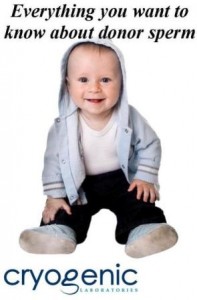Blog written by Director of Operations Fairfax Cryobank Michelle Ottey, PhD
It is the choice of a child’s parents to disclose the details of their conception, as well as to decide the degree of information that is shared. This is an incredibly personal decision. Since 2004 the American Society of Reproductive Medicine Ethics Committee, the national organization representing fertility specialists, has supported full disclosure. I agree with the committee and several other sources that state that disclosure is in the best interest of the child. Secrecy is not healthy and can lead to emotional stress.
Several options for donor selection are available, some for over 20 years. A prospective parent can choose from an anonymous sperm donor, an ID consent sperm donor or a directed (known) donor. Directed donors, because they are known to the recipient, allow an option for disclosure of the identity of the donor at the discretion of the recipient. The ID donor programs vary by sperm bank, but for the most part this means that upon reaching the age of 18 your prospective child will have the option to obtain contact information for the donor from the sperm bank. This does not guarantee a relationship or sustained contact with the donor, simply that they have agreed to be contacted.
It is important to understand that at most banks you can obtain all of the same detailed information about the anonymous donor with the only difference being the release of identifying information if you choose an ID donor. This means that regardless of the category of donor you choose you will have access to the same comprehensive medical history, personal profile, and usually some additional information via interviews or pictures.
An added advantage that using either an anonymous or ID sperm donor allows you is the opportunity to have half siblings connect. The natural curiosity that children have can in many ways be addressed by contact with a half sibling; these siblings discover their shared characteristics and interests that may be similar to the donor. Several sperm banks have developed their own online forums to discuss issues of disclosure, address common concerns and even facilitate these contacts among families that used the same donors.
As the use of donor insemination increases and families are more open there will be increased acceptance. We have already seen a growth in resources for families from the release of children’s books to a plethora of websites about and for DI families.



